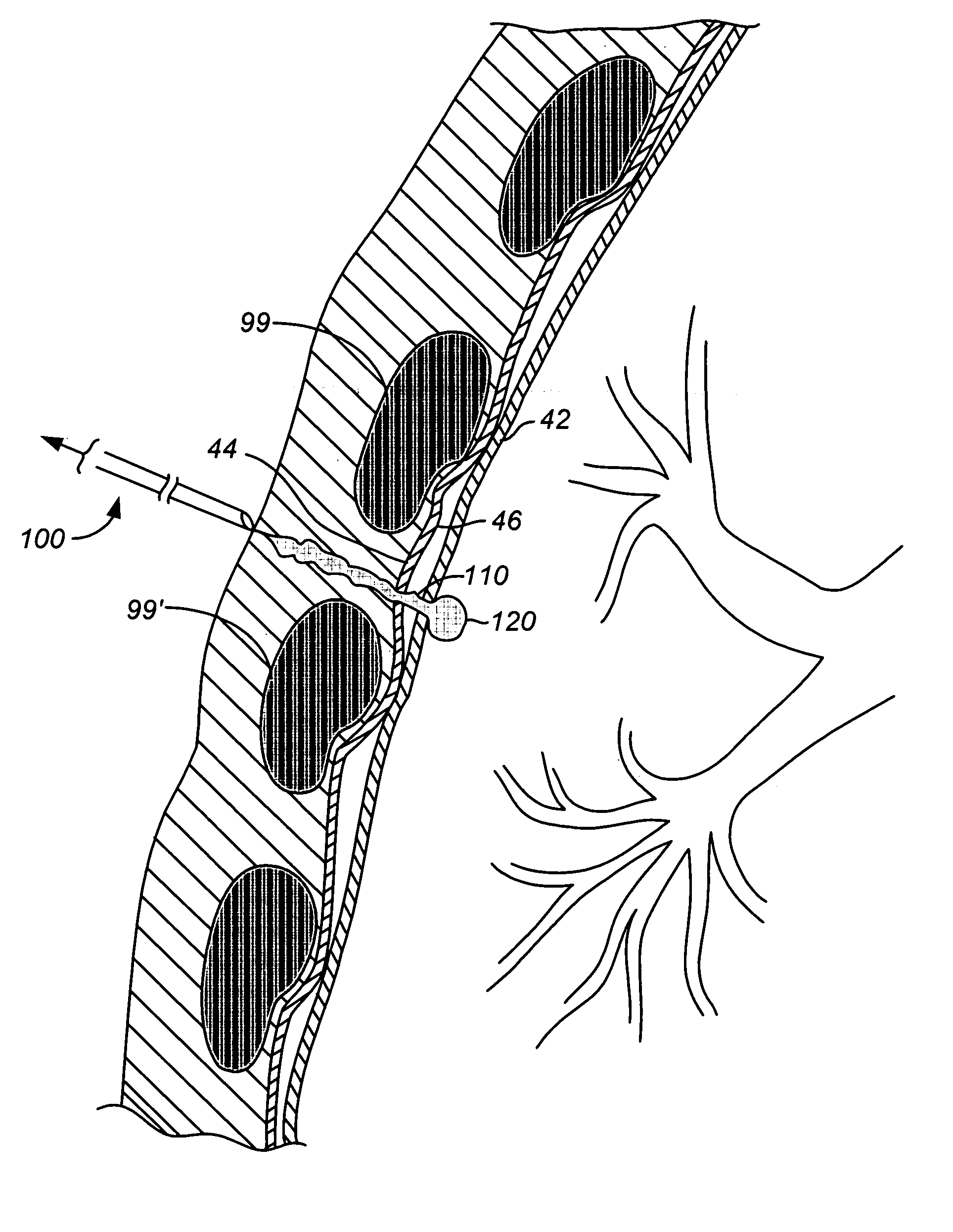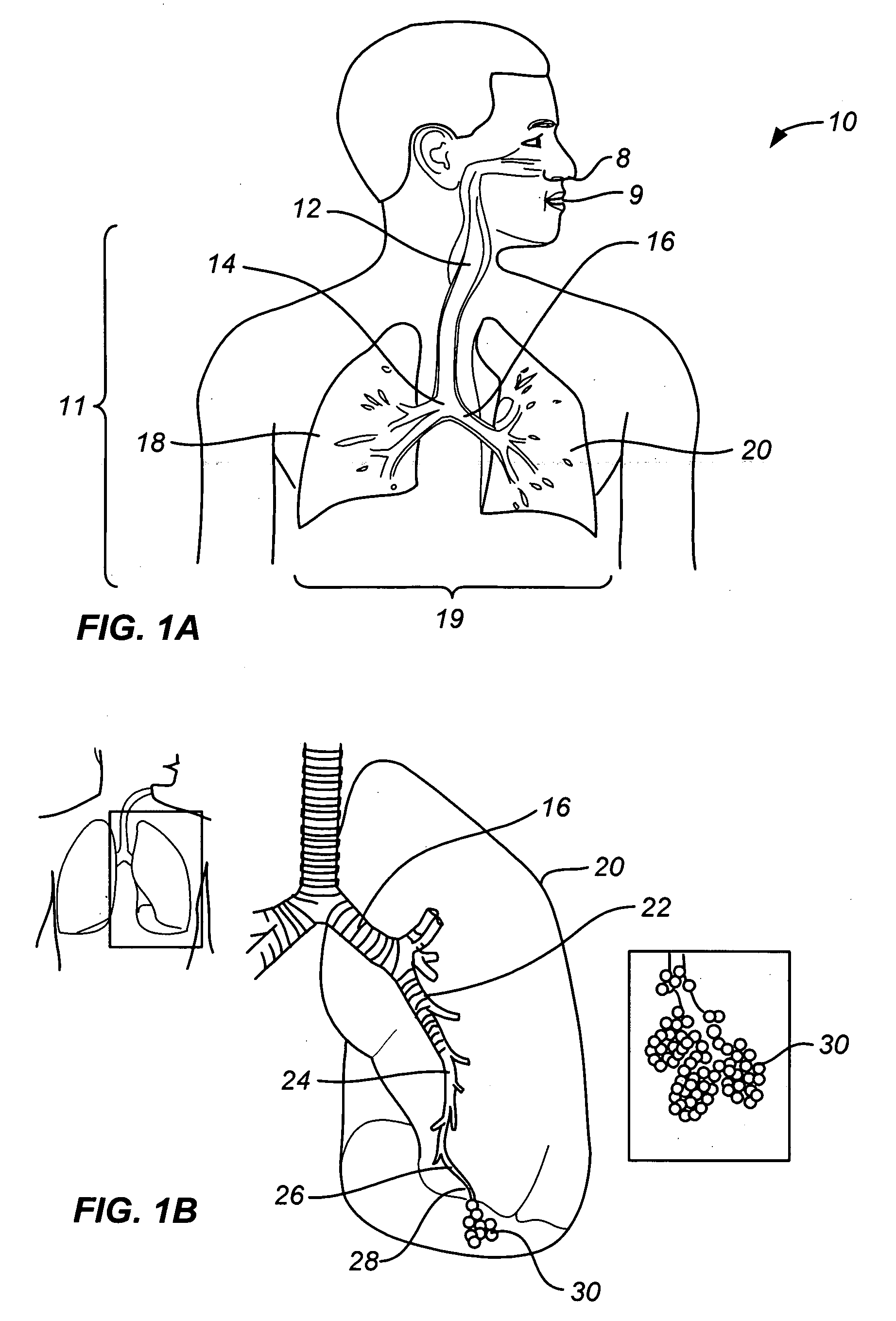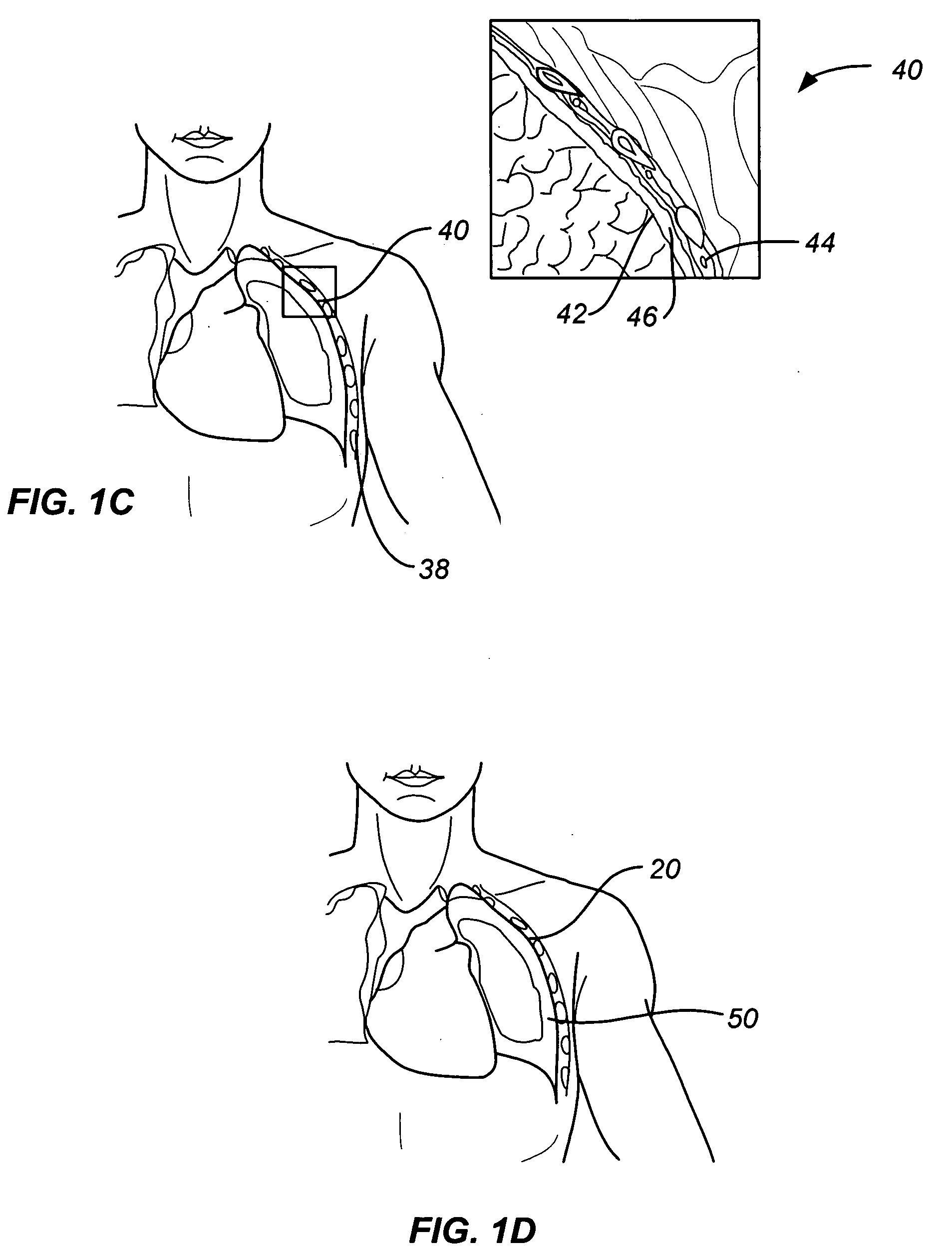Lung device with sealing features
a technology of lung device and sealing feature, which is applied in the direction of prosthesis, catheter, application, etc., can solve the problems of not even recommending screening for persons of high risk, not knowing whether the use of spiral ct scan improves the prognosis for long-term survival, and many are acute and deadly, so as to mitigate pneumothorax and hemothorax, the effect of reducing the risk of lung diseas
- Summary
- Abstract
- Description
- Claims
- Application Information
AI Technical Summary
Benefits of technology
Problems solved by technology
Method used
Image
Examples
Embodiment Construction
[0031] As noted above, a principal aspect of the present invention is the design of lung devices that can safely perform a transthoracic procedure without impacting the negative pressure required to maintain lung function. In particular, the present devices allow accessing the interior of the lung or the surrounding tissue to perform therapeutic or diagnostic functions while reducing the risk of complications associated with the accessing procedure. The devices and methods are used with adhesive compositions that have cross-linkable moiety and adhering moiety that enable the glue to adhere to lung tissue with low toxicity. Suitable adhesives, such as glue, act as a sealant to prevent the passage of liquid or gas.
[0032] The invention provides methods, materials and devices for providing diagnostic and therapeutic treatment to a target tissue, such as lung, using a suitable adhesive, such as glue, as a sealant to prevent the passage of liquid or gas. The materials used in the method ...
PUM
 Login to View More
Login to View More Abstract
Description
Claims
Application Information
 Login to View More
Login to View More - R&D
- Intellectual Property
- Life Sciences
- Materials
- Tech Scout
- Unparalleled Data Quality
- Higher Quality Content
- 60% Fewer Hallucinations
Browse by: Latest US Patents, China's latest patents, Technical Efficacy Thesaurus, Application Domain, Technology Topic, Popular Technical Reports.
© 2025 PatSnap. All rights reserved.Legal|Privacy policy|Modern Slavery Act Transparency Statement|Sitemap|About US| Contact US: help@patsnap.com



